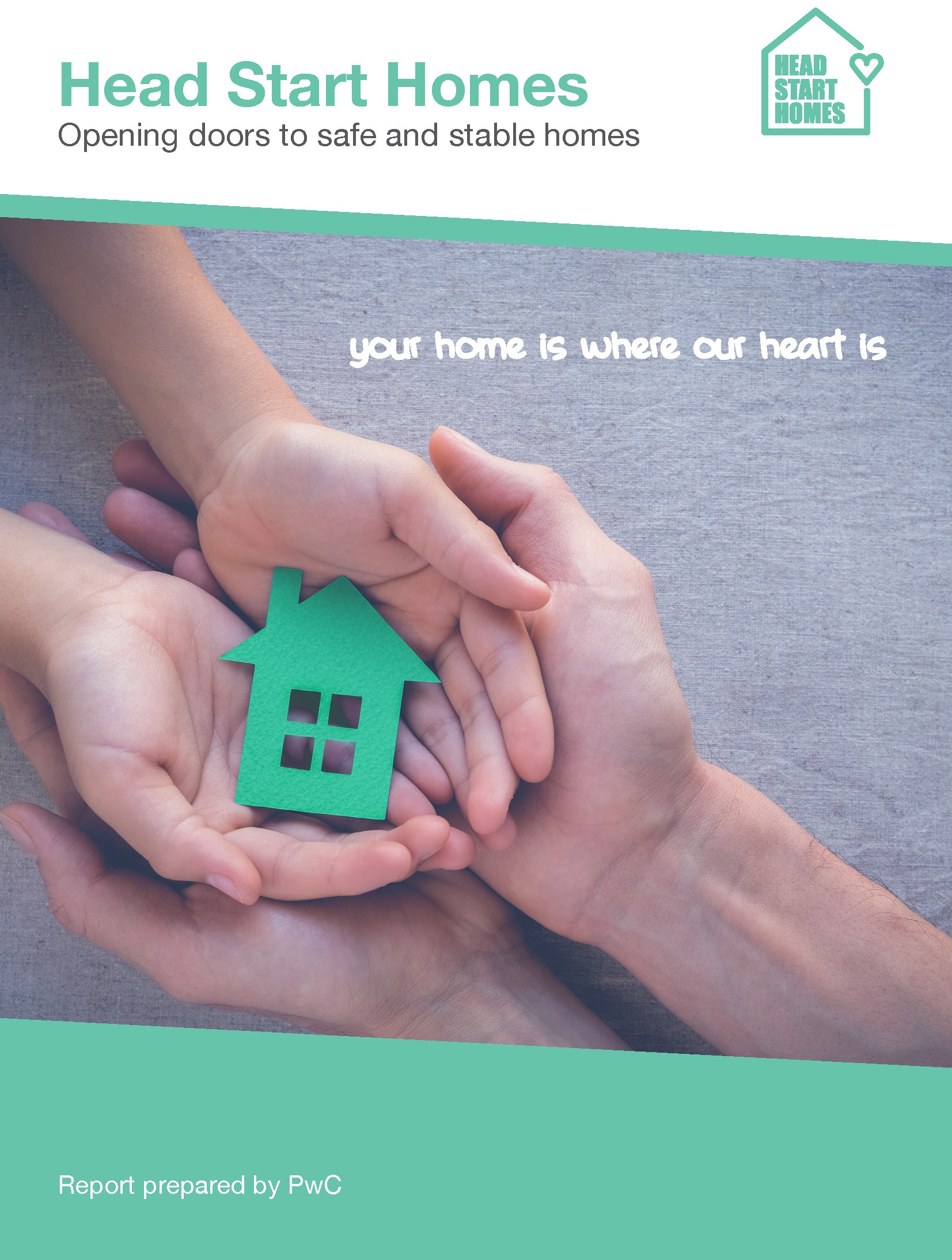Head Start Homes’ inaugural report
OPENING DOORS TO SAFE AND STABLE HOMES
Our inaugural report provides an overview of the current housing crisis in Australia and how Head Start Homes innovative solution will provide hope and help to help end homelessness and poverty.
KEY FACTS
Right now more than 115,000 people living in Australia are homeless (up 14 per cent since census night in 2011) and close to 200,000 households are on housing waitlists, waiting for 10+ years to be allocated into a stable home.
60% of households report they are homeless at the time of allocation to public rental housing. With a further 36% being at risk of homelessness (total 96%).
Research by the University of Melbourne in 2017 estimates that the annual cost to the community of rough sleeping around Australia is $25,000 per person. The ABS estimates that there were 8,200 people sleeping rough on the night of the last census , representative of a potential $2 billion impact on Australian governments.
Access to safe, secure and affordable housing provides significant benefits at the individual level, as well as at the community and state level. In particular, the effect of a safe and secure home on someone previously experiencing homelessness can have dramatic benefits to their health, well-being, educational outcomes and financial position.
Australian cost-benefit studies of affordable housing projects suggest that for every dollar invested in housing an at-risk individual, the state government receives between $1.37 and $3.25 in benefits. Similar programs to Head Start Homes which support social housing tenants to transition to private ownership such as the Melbourne Apartment Project and the Wyatt Trust Housing Initiative have returned between $2.19 and $6 dollars in benefits for every $1 of cost.
The Australian Bureau of Statistics has consistently found a strong correlation between home ownership status and net worth; the poorest Australians are renters while the wealthiest are homeowners. According to a 2011 study on wealth distribution by the ABS, 91 percent of the lowest net worth households were renters while high net worth households have the highest incidence of home ownership without a mortgage (59 percent).
The Grattan Institute has estimated that negative gearing and capital gains tax exemptions cost the Federal Budget $11.7 billion a year. In comparison, the Federal Government spends $4.4 billion on Commonwealth Rent Assistance, which supports approximately 1.35 million lower income Australian households who would otherwise be unable to afford their rent. This means that our system is spending significantly more money on supporting people who are already property owners to improve their financial position than helping low-to-moderate income earners to enter the market.
Research by Westpac found that six in ten Australians aspire to home ownership, citing greater control, security and pride in place as key reasons underpinning that aspiration, while 86% believe that having your own home means a lot on an emotional level.
Home ownership rates in Australia are declining for all age groups under the age of 65. Young people today are much less likely to own a home than their parents were at their age.

